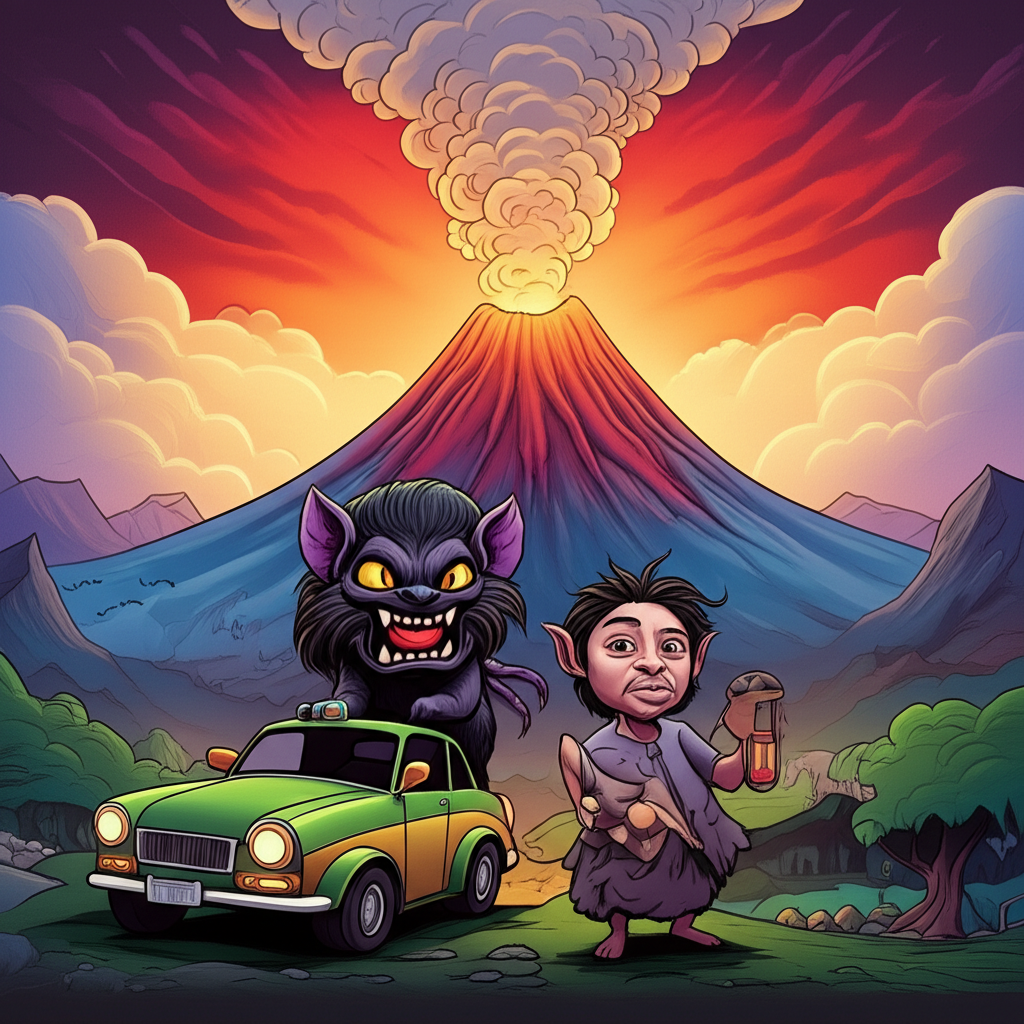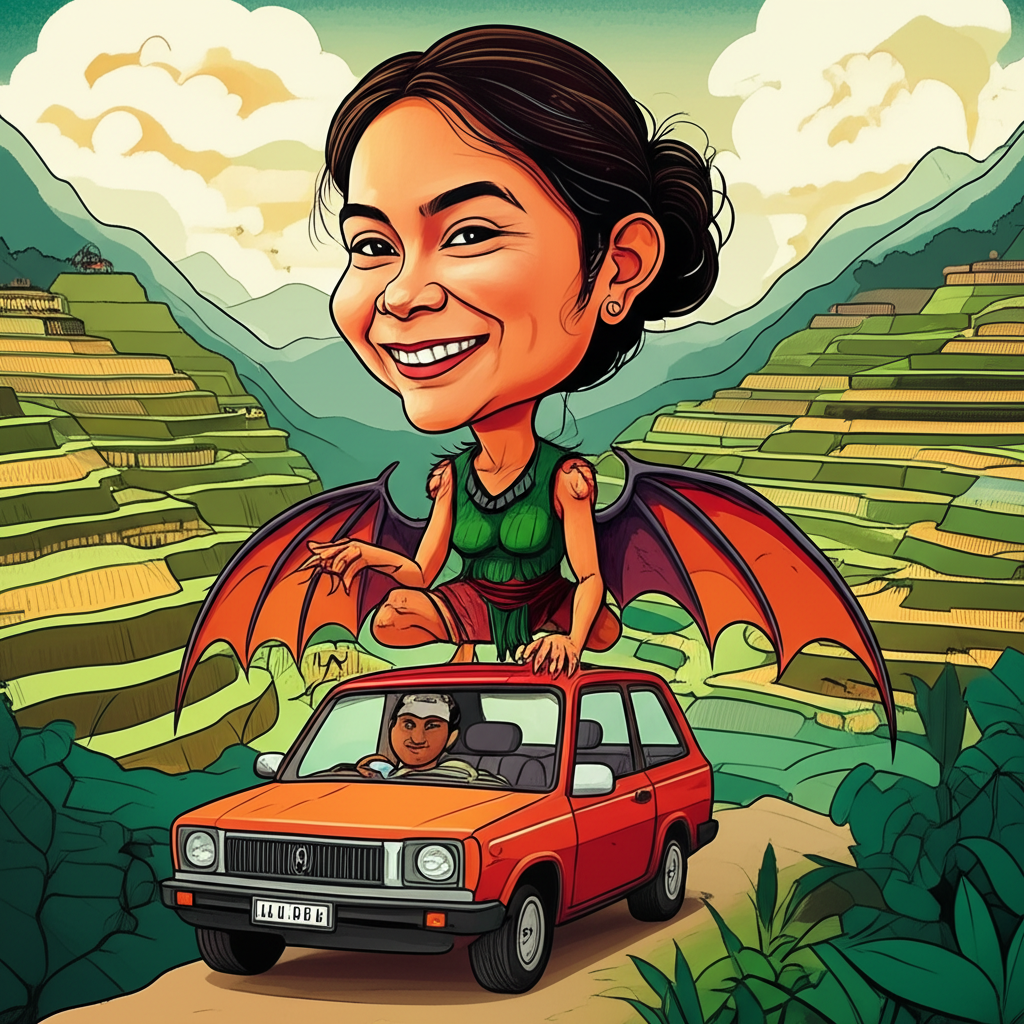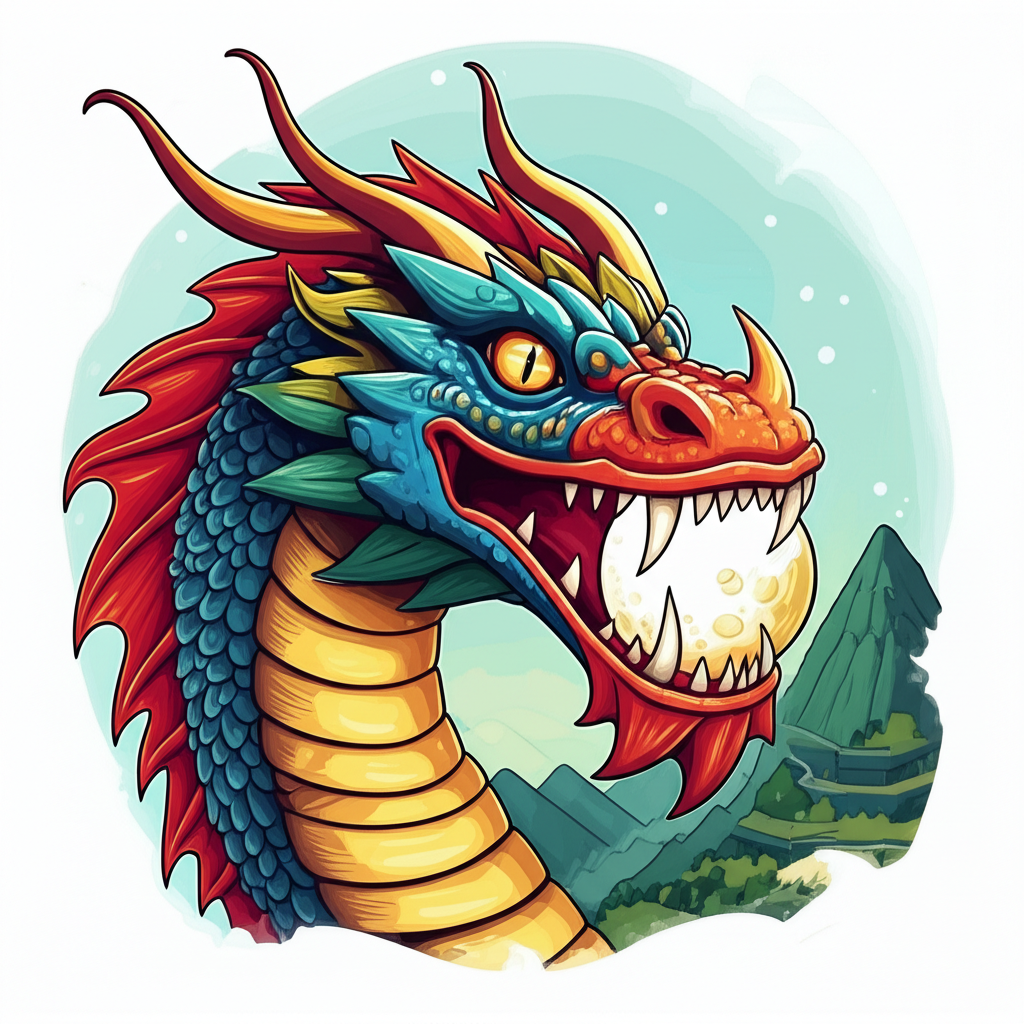
The world, for many ancient cultures, was a tapestry woven with threads of the visible and the unseen. Among the vibrant, verdant islands that now constitute the Philippines, particularly in the Bicol region, stories of the supernatural were not mere bedtime tales but integral components of a worldview that sought to explain the mysteries of existence, the vagaries of nature, and the complexities of human behavior. One such enduring narrative, steeped in the shadow of the majestic Mayon Volcano, speaks of the Aswang, a creature of chilling legend, and its connection to the fiery heart of this iconic peak.
This is not a testament to divine power or a guide for practice. Rather, it is an exploration of the rich tapestry of folklore, a window into the imaginative minds of ancient peoples who, in their time, sought to understand the world around them through potent metaphors and captivating stories. As Muslims, we hold the unwavering belief that only Allah (SWT) is the true Creator and Sustainer of all that exists, and that the Quran and Sunnah are our definitive guides. Therefore, we approach these ancient narratives purely for their cultural, historical, and educational value, appreciating them as expressions of human imagination and the enduring power of storytelling.
The World of the Ancients: Where Spirits Dwelt
Imagine a time long before modern science, when the natural world was imbued with sentience. The dense jungles teemed with unseen forces, the rivers whispered secrets, and the mountains stood as silent, powerful deities. In the Bicol region, this was especially true. The ever-present, awe-inspiring Mayon Volcano, with its near-perfect conical shape, was a source of both profound beauty and terrifying power. Its occasional rumblings and fiery eruptions were not random geological events but potent expressions of the divine or, perhaps, the displeasure of ancient spirits.
In this era, life was intimately connected to the rhythms of nature. Agricultural cycles, the bounty of the sea, and the ever-present threat of disease or natural disaster were all viewed through a lens of spiritual forces. People lived in close-knit communities, where oral tradition was the primary vehicle for transmitting knowledge, values, and cautionary tales. These stories served multiple purposes: to explain the inexplicable, to foster social cohesion, and to instill a sense of respect and fear towards the powerful forces that governed their lives.
The Aswang: A Shadow in the Night
The Aswang, in the context of these ancient Bicolano beliefs, was not a single, monolithic entity but a broad category of shapeshifting, often malevolent, supernatural beings. These creatures were typically depicted as embodying the darker aspects of the nocturnal world, preying on the vulnerable and instilling fear in the hearts of the unwary.
Symbolically, the Aswang represented the unknown terrors that lurked beyond the safety of the village firelight. They were the embodiment of primal fears: the fear of the dark, the fear of sickness and death, and the fear of the unknown dangers that could snatch away loved ones. Their shapeshifting abilities allowed them to infiltrate the human world, appearing as familiar figures – a beautiful woman, a trusted neighbor – before revealing their monstrous true nature. This duality underscored the ancient belief that danger could often be disguised, and that appearances could be deceiving. The Aswang’s predatory nature also served as a symbolic representation of the destructive forces of nature that could ravage crops, livestock, and human lives.
The Whispers of the Mountain: A Narrative of Anitun Tabu
Within this rich folklore, a particular narrative emerges, weaving together the legend of the Aswang with the formidable presence of Mayon Volcano. While specific details can vary across generations and communities, a common thread speaks of the volcano as a dwelling place, or at least a point of origin, for certain potent supernatural entities, sometimes associated with the Aswang.
One such tale, often referred to through fragmented retellings and passed down as the "Anitun Tabu" (meaning "the forbidden wind" or "the sacred wind" in some interpretations, though its precise meaning can be debated and is subject to the nuances of local dialect and context), whispers of a powerful being residing within the fiery crater of Mayon. This being, often described as a guardian or a primal force, was said to possess immense power, capable of both nurturing and destroying.
According to the lore, when the volcano stirred, its ash plumes reaching for the heavens and its molten heart pulsing with ancient energy, it was said to be the manifestation of this entity’s displeasure or exertion of its power. Some stories linked this powerful being to the Aswang, suggesting that the creatures themselves were either born from the volcano’s fury or drew their malevolent power from its depths.
Imagine the scene: the moon hangs high over the Bicol landscape, casting long, eerie shadows. The air grows heavy with an unnatural stillness, broken only by the distant, unsettling rumble from Mayon. Villagers, huddled in their homes, draw their mats closer, their eyes wide with a mixture of awe and dread. They tell tales of the Aswang, creatures that could fly through the night, their eyes glowing like embers, their sharp tongues seeking sustenance. And they whisper that these very creatures, or the source of their terror, were somehow tied to the colossal mountain that dominated their horizon.
Perhaps, in their imaginations, the Aswang were the emissaries of the volcano’s spirit, sent to carry out its will. Or perhaps, the sheer, untamed power of the volcano inspired the creation of such formidable and terrifying beings in their folklore. The narrative might describe how, during times of volcanic activity, the Aswang would become more agitated, their presence felt more keenly in the surrounding villages. The eerie winds that swept down from the mountainside were sometimes interpreted as the breath of the volcano’s spirit, carrying with it the essence of the Aswang. The stories might speak of those who dared to venture too close to the volcano, or who angered its spirit, only to become prey to the lurking shadows that emerged from its fiery core.
These were not tales meant to be factually verified, but rather vivid imaginings designed to capture the raw power and terrifying beauty of the natural world, personified by the ever-present Mayon Volcano and the shadowy figures of the Aswang.
Symbolism and Meaning: Nature’s Fury and Human Vulnerability
The fusion of the Aswang legend with Mayon Volcano in these ancient narratives is rich with symbolic meaning. Mayon Volcano, with its majestic yet unpredictable nature, was a powerful symbol of nature’s awesome and sometimes destructive power. Its eruptions were a stark reminder of humanity’s vulnerability in the face of forces far greater than themselves.
The Aswang, in this context, could be seen as a personification of the destructive aspects of nature – the sudden, unexpected dangers that could disrupt the natural order. The fear associated with the Aswang mirrored the fear of the volcano’s potential devastation. The shapeshifting nature of the Aswang could also symbolize the deceptive and capricious nature of these powerful natural forces.
Furthermore, the stories might have served as a form of moral instruction. The Aswang’s predatory nature could represent the consequences of greed, cruelty, or disrespect towards the natural world or the community. By demonizing such figures, ancient peoples reinforced the importance of communal harmony, respect for nature, and ethical conduct. The tales served as cautionary fables, encouraging vigilance and adherence to societal norms for the collective well-being.
Modern Echoes: From Folklore to Popular Culture
Today, the Aswang and the lore surrounding it, including its connection to prominent natural landmarks like Mayon Volcano, continue to resonate in various forms. In contemporary Philippine literature, the Aswang is a recurring motif, explored by authors seeking to delve into the nation’s rich cultural heritage and its unique brand of folklore. These literary interpretations often reimagine the Aswang, exploring their psychological dimensions, their place in the collective unconscious, and their symbolic significance in modern society.
Filmmakers and game developers have also embraced the Aswang, transforming these ancient legends into captivating horror films, suspenseful thrillers, and immersive video games. These modern adaptations often draw inspiration from the traditional depictions, while also injecting new creative elements and exploring different facets of the Aswang myth. They serve as a testament to the enduring power of these stories to capture the imagination and to provide a fertile ground for creative expression. Cultural studies scholars also analyze these myths, examining their origins, their evolution, and their significance in understanding Filipino identity and cultural history.
A Concluding Reflection: Heritage and Imagination
The stories of the Aswang and their purported connection to Mayon Volcano, like the "Anitun Tabu," are precious threads in the rich tapestry of human cultural heritage. They are not to be believed as literal truths or divine pronouncements, but rather appreciated as powerful expressions of imagination, as attempts by ancient peoples to grapple with the mysteries of their world. As Muslims, we firmly believe that the ultimate power and creation belong to Allah (SWT) alone. Yet, we can still marvel at the human capacity for storytelling, for weaving narratives that explain, entertain, and preserve cultural memory. These ancient tales, passed down through generations, remind us of the enduring power of folklore to shape our understanding of the world, to evoke our deepest fears and our most profound wonder, and to connect us to the imaginative spirit of those who came before us. They are echoes from a distant past, whispering tales of a world where nature’s might and the human imagination danced in the shadow of a fiery mountain.





